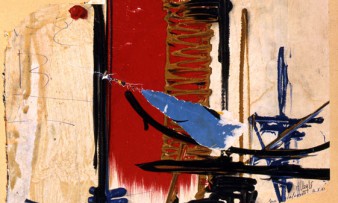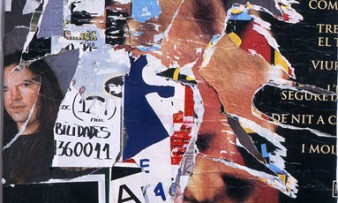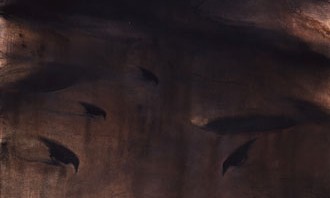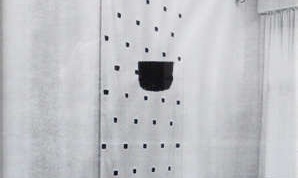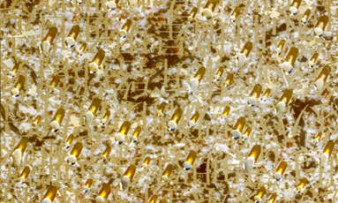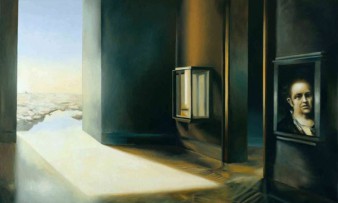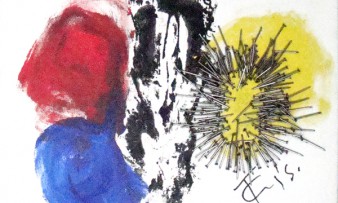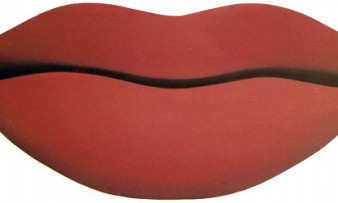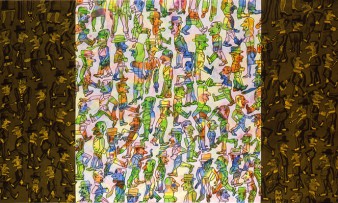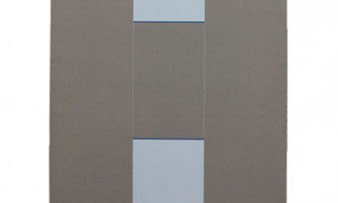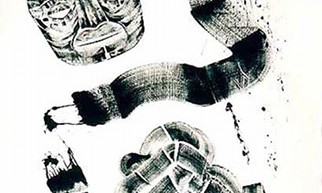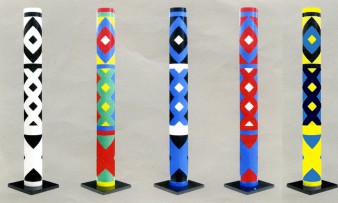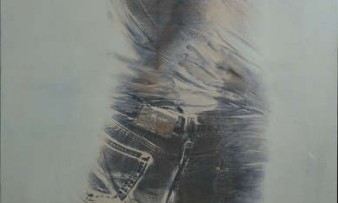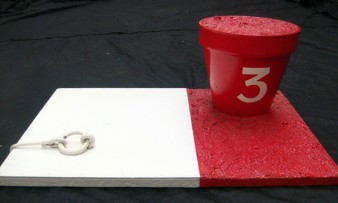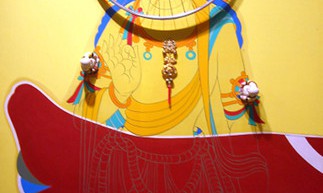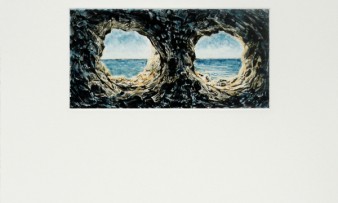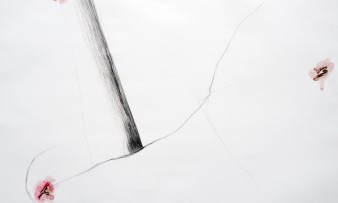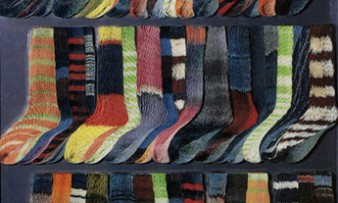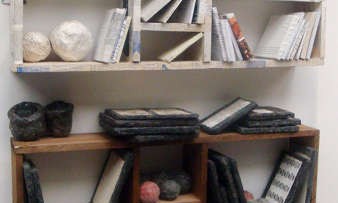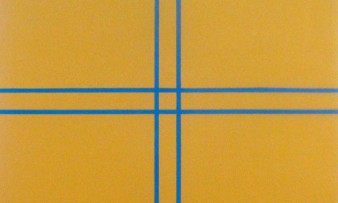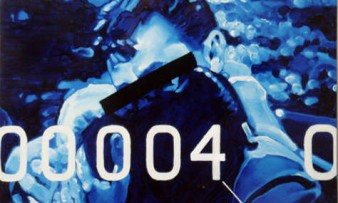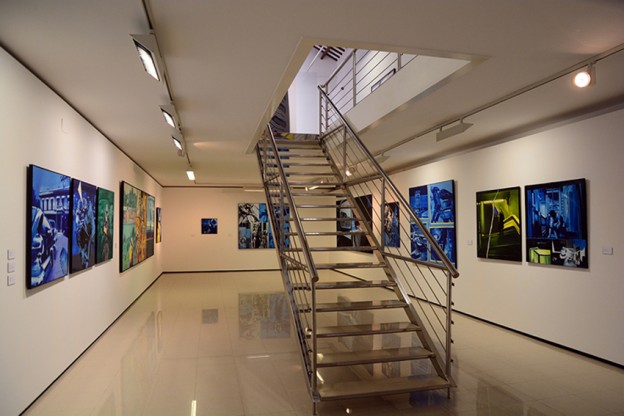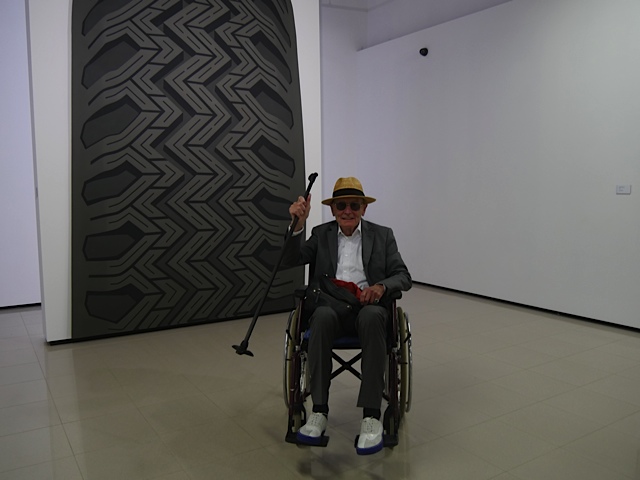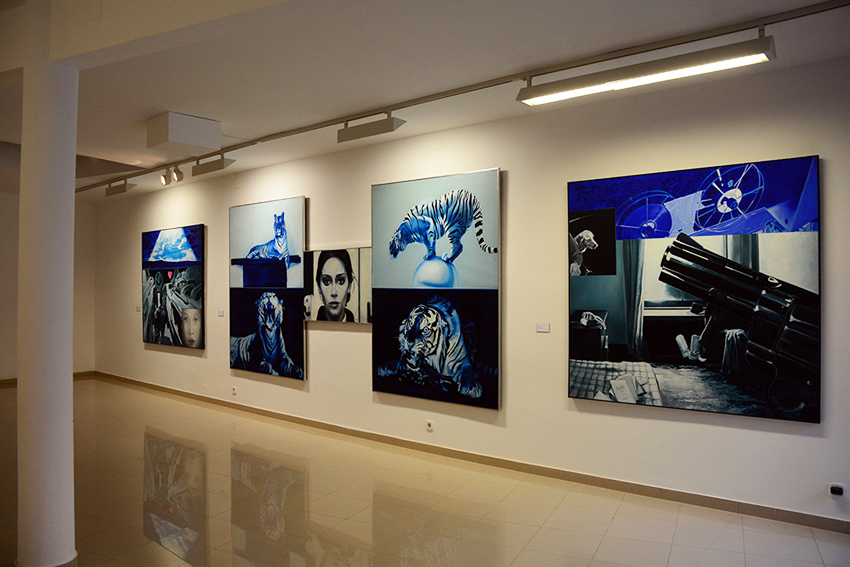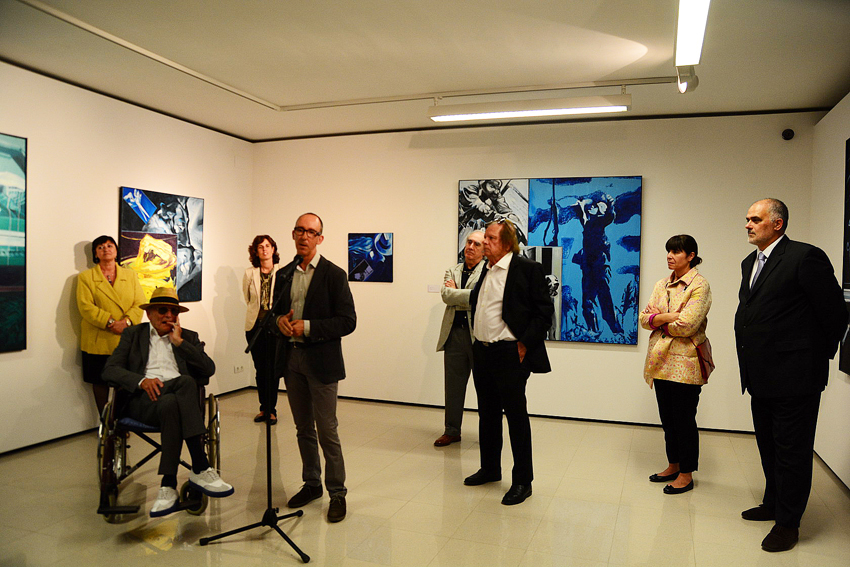He is one of the most relevant artists in contemporary French art from the second half of the 20th century
The Stämpfli Foundation presents a retrospective journey to the cinematic universe of Jacques Monory, one of the most relevant artists on the contemporary art scene in France during the second half of the 20th century. Jacques Monory, mon Cinéma brings together 30 of the artist’s works until October 18th, in an exhibition coordinated by Ferran Martínez Sancho. The show consists of an autobiographical portrayal of Monory revolving around his major themes: death, desire and the tragic condition of the human being. And all in the blue tone that characterizes and distinguishes his work.
The opening ceremony was attended by an enthusiastic Jacques Monory who, accompanied by Paule, constantly expressed his gratitude for the tribute that Sitges is paying to his career. Also attending the soiree –presided over by Sitges Mayor Miquel Forns– were other artists, gallery owners and people from the art world like Antoni Taulé, Pierre Tillman, Sonia Zannettacci, Alain Gilbert or Doctor Gilbert Haas.
Jacques Monory, born in Paris in 1924, is one of the great figures of contemporary art. His artistic career is inextricably linked to Narrative Figuration as well as to the group of artists who, in 1964, became known to the public in Paris at the Mythologies quotidiennes exhibition. This group constitutes the heart of the Stämpfli Foundation’s collection and Jacques Monory is one of its essential figures.
His pictorial career, which began back in the 1950’s in the 20th century, is inseparably associated with photography and cinema. All of his work is strongly rooted in emotional life lessons, experiences and his personal history, making use of images from previous work with camera in hand, so that each painting amounts to a still from some very long, greatly autobiographical footage.
The blue atmosphere that his images are immersed in makes up his first and most distinguishing hallmark. Monory’s blue, a color made and patented by the artist himself, takes us back to the cinematic method known as “American night”, a blue filter that movies were shot with to simulate a night scene. On the other hand, in many of his paintings Monory sets and combines the image of one or several scenes, leaving their narrative fiction in the air, at the disposal of the spectator’s gaze and imagination. And so they become large postcards of a sort, sent from dreams or from some remote corner of the artist’s memory.
On different occasions, Monory has referred to blue as the color of his dreams and, at the same time, as a protective barrier constructed before his fear of violence that, paradoxically, is constantly present in his paintings. It is a violence that is closely related to American mystery B movies and treated with a marked oneiric tone; dreams where personal experiences and obsessions are combined and where Monory himself is featured in some of the scenes, highlighting the autobiographical character of all his work even more. The color blue imbues it with an enigmatic, nocturnal atmosphere that combines coldness and distance from a technical point of view with a vital and existential thematic implication.
Jean-François Lyotard, the postmodern philosopher, and a friend of Monory with whom he has collaborated on various occasions, speaks of death and the machine as the two important underlying themes in the artist’s work. The revolver and weapons, American cars from the 50’s to the 70’s, bullet holes and, inevitably, the female figure, are constant dramatic elements in his paintings.
This exhibition is installed in Room 2 with an interesting peculiarity. A small format, four hand piece from 1989 made by Jacques Monory and Peter Stämpfli on the occasion of a joint exhibition at the Abbaye des Cordeliers in Châteauroux and that is on loan especially for this exhibition. It is a piece that is highly representative of the close, uninterrupted friendship between these two artists since the 1960’s and that is the backdrop for this great exhibition.
On display in the Foundation’s Rooms 2 and 3 are a group of works made between 1968 and 2012. They belong to different series like Voiture de rêve, Baiser, Noir et bleu or Roman-Photo, among others.
It is important to point out a very special piece: Ex-, his first short film. Shot in 1968 with his close friend, publisher Robert Delpire, the film is an essential reference among his work. Visitors can see it screened in Room 3. Ex- anticipates much of his subsequent career, starting with the blue filter that Jacques Monory uses to color the world all of his work inhabits since the 1960’s and until today.
